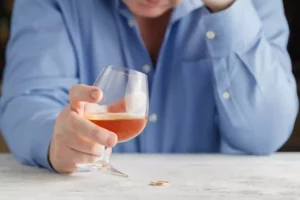When they examine themselves in the mirror, they may not recognize themselves. Common outward changes may include flushed skin and a distended stomach or “beer belly.” They may not be aware, but alcohol is affecting their bodies internally as well. Possible physical side effects include increased blood pressure and liver damage. In the morning, their hands may shake and they may experience frequent heartburn.
Read Through Our Resources and Educate Yourself Further on Topics That Affect Families Like Yours…
Learning how to deal with an alcoholic spouse as well as looking after yourself can be stressful and it’s likely you’ll need support to help you manage. We’ve put together some recommendations on how to look after yourself and the other people living in your household. If you’re still not sure that your partner’s a functioning alcoholic or has a substance abuse problem, reach out to us for the answers to your questions.
- While a drink as stress relief in moderation is typical for many adults, it is important to note if this is a repeated reaction.
- Many high-functioning alcoholics earn a good living and can support their families while continuing to drink.
- Treatment programs at The Recovery Village include a full spectrum of alcohol recovery services, from alcohol detox to rehab, aftercare and sober housing.
- Functional alcoholics are often intelligent, hardworking and well-educated.
- Whether you are struggling with addiction, mental health or both, our expert team is here to guide you every step of the way.
Married to a High-Functioning Alcoholic
- Like peanut butter and jelly, functional alcoholics and codependent wives tend to go together.
- Living with a high-functioning alcoholic can be quite unpredictable and emotionally taxing.
- If you’ve been thinking about getting clean and sober, or if you’ve been wanting to work on and strengthen the recovery you already have, it’s never been easier to do it through telehealth.
- Toavoid enabling an alcoholic spouse, you may have to leave the home you share, which can seem like too brash of a decision.
- Department of Health and Human Services calculated that functioning alcoholics make up almost 20% of the alcoholic population.
When you live with a spouse who has an alcohol use disorder, taking care of yourself is important. If you notice that your spouse is drinking heavily and being deceptive about it, stage an intervention with people you and your spouse trust and feel safe with. This provides insurance that they will be more responsive and accepting of the conversation. If you’re living with an alcoholic partner, you’ve probably faced a lot of challenges and experienced many different emotions. When it comes to how to live with an alcoholic husband, try not to make any major decisions without getting input from your spouse or partner first.
Recognizing the Signs of a Functioning Alcoholic
If you feel that any of our content is inaccurate, out-of-date, or otherwise questionable, please contact at “Love yourself more than you love him,” they say, as though the phrase alone is enough to empower you. But he’s part of you, and you’re part of him, and to love yourself independently while letting him go feels impossible. When the money is spent, the financial burden can impact the entire household. You may notice your spouse becoming increasingly irritated or anxious. Dr. Joshua Yager is an Atlanta native, board-certified family practice physician who is dedicated to the health and wellbeing of his community.
Relationship
- Families can get stuck in a holding pattern or waiting game while waiting for the day they address the admitted problem.
- It is common for families to gauge the severity of an alcohol use disorder based on alcohol consumption.
- Helping a functioning alcoholic can be emotionally draining and stress-inducing for their spouse.
- If you or your spouse is struggling with alcohol abuse and want addiction recovery help, please call WhiteSands Alcohol and Drug Rehab.
- Having a partner struggle with substance abuse doesn’t just impact their life, but yours as well.
- A high-functioning alcoholic may hide their alcohol abuse for years without suffering any major losses.
Actions such as calling in sick on their behalf, rescuing them from legal troubles, or purchasing alcohol for them may seem like temporary solutions but ultimately do more harm than good. If you are concerned about your loved one’s drinking, it can be helpful to join a support group such as Al-Anon. Such groups can offer valuable support, encouragement, advice, and information.
They lose track of friendships and prioritize time with alcohol over family time. Consciously or unconsciously, the codependent may help the alcoholic to continue drinking to maintain the status quo. Many high-functioning alcoholics earn a good living and can support their families while continuing to drink. Intervening in the addictive behavior may be seen as a threat to the family’s financial security — even if the family must put up with emotional neglect or physical sober house abuse. Bureau of Justice Statisticsnoted that nearly 60% of violent incidents against a domestic partner or family member were committed under the influence of alcohol. Whether you have an alcoholic spouse, partner or other loved one, you may be wondering how to help.
If your husband does make the decision to pursue treatment for high-functioning alcoholism, it is an important step, but there is still hard work ahead for both of you. You will also want to commit to family counseling and support groups, which can help rebuild any frayong bonds of trust between the two of you. When you are both committed to the work involved in recovery from alcoholism, it can be the beginning of a transformation in your lives, and in your marriage. As the spouse of a high-functioning alcoholic, life can be stressful for you, too.
Rehab & Support Groups
If your spouse is showing signs of alcoholism, it will only get worse and lead to more problems. That’s why it’s so important for your partner to go to residential addiction treatment (aka rehab) as soon as possible. Even if it seems as though your partner’s drinking isn’t affecting their daily life, excessive drinking and a tolerance build-up are a major sign that they may be an alcoholic or struggling with addiction. In the case https://northiowatoday.com/2025/01/27/sober-house-rules-what-you-should-know-before-moving-in/ of the high-functioning alcoholic, it is not always easy to recognize if your husband’s drinking meets the criteria for an alcohol problem.
This process can help the family see the degree of severity their loved one is at. Some questions we ask may not seem relevant, and they are intended to help determine how much help your loved one may require. An alcoholic is unlikely to admit they have a dependency or issues resulting from it. They may go far out of their way to hide behaviors or avoid conversations. Over time this can teach those connected to the alcohol user not to ask as they will get no answer.




